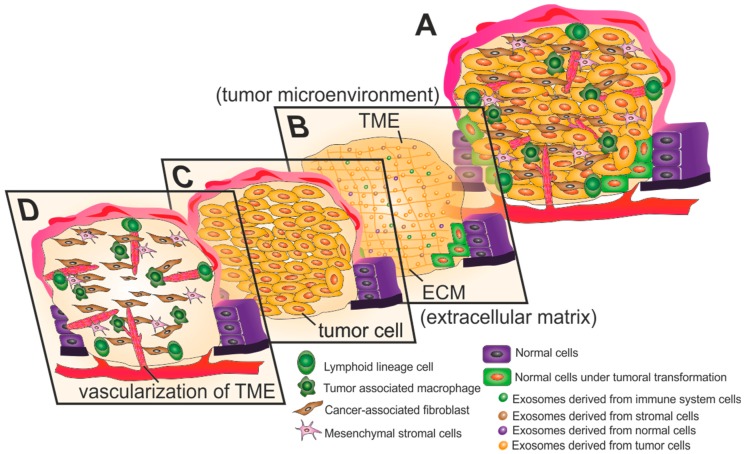Figure 1.
Anatomy of the tumor microenvironment (TME). (A) The TME of a late stage solid tumor is highly heterogeneous and complex. (B) Exosomes play important roles in paracrine and autocrine communication between TME cells, being preponderant in the modulation and development of the tumor. Exosomes are also involved in the transformation of normal cells adjacent to the TME into tumor cells. The extracellular matrix (ECM) in the TME is frequently dense and stiff, resulting in desmoplasia. (C) The rapid growth of tumor cells results in hypoxic regions and lack of nutrients within the tumor, causing the Warburg effect. This metabolic shift into anaerobic glycolytic pathway results in acidification of the TME. (D) The rapid growth of tumor cells induces angiogenesis and consequent formation of chaotic branching structures. Stromal cells (including Cancer-associated fibroblasts and mesenchymal stromal cells) and cells from the immune system (both lymphoid and myeloid lineage cells) are important players in tumor development and prognosis.

